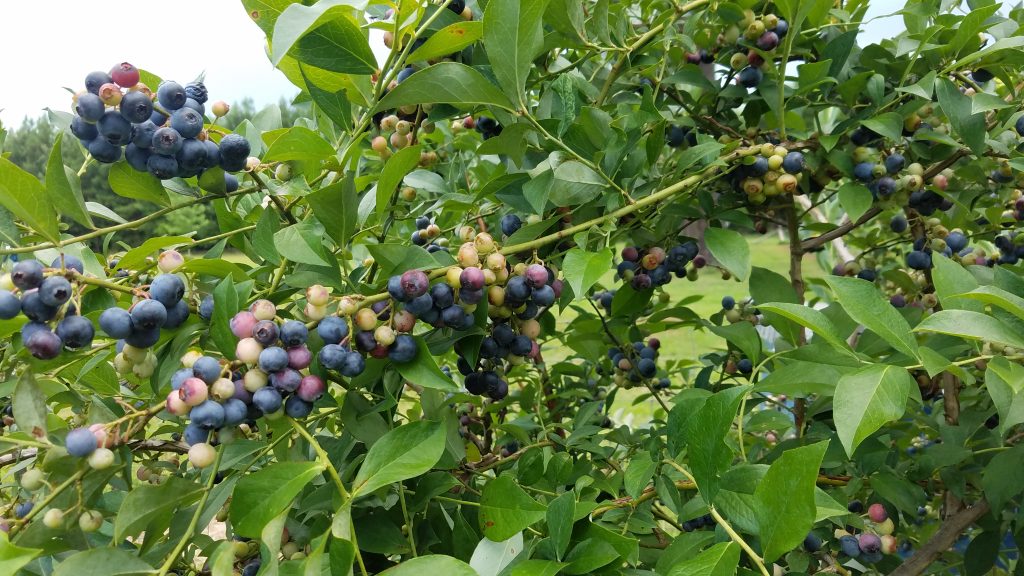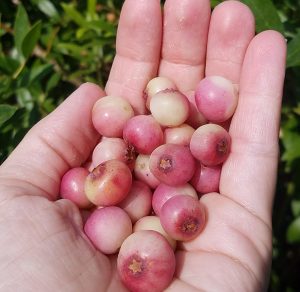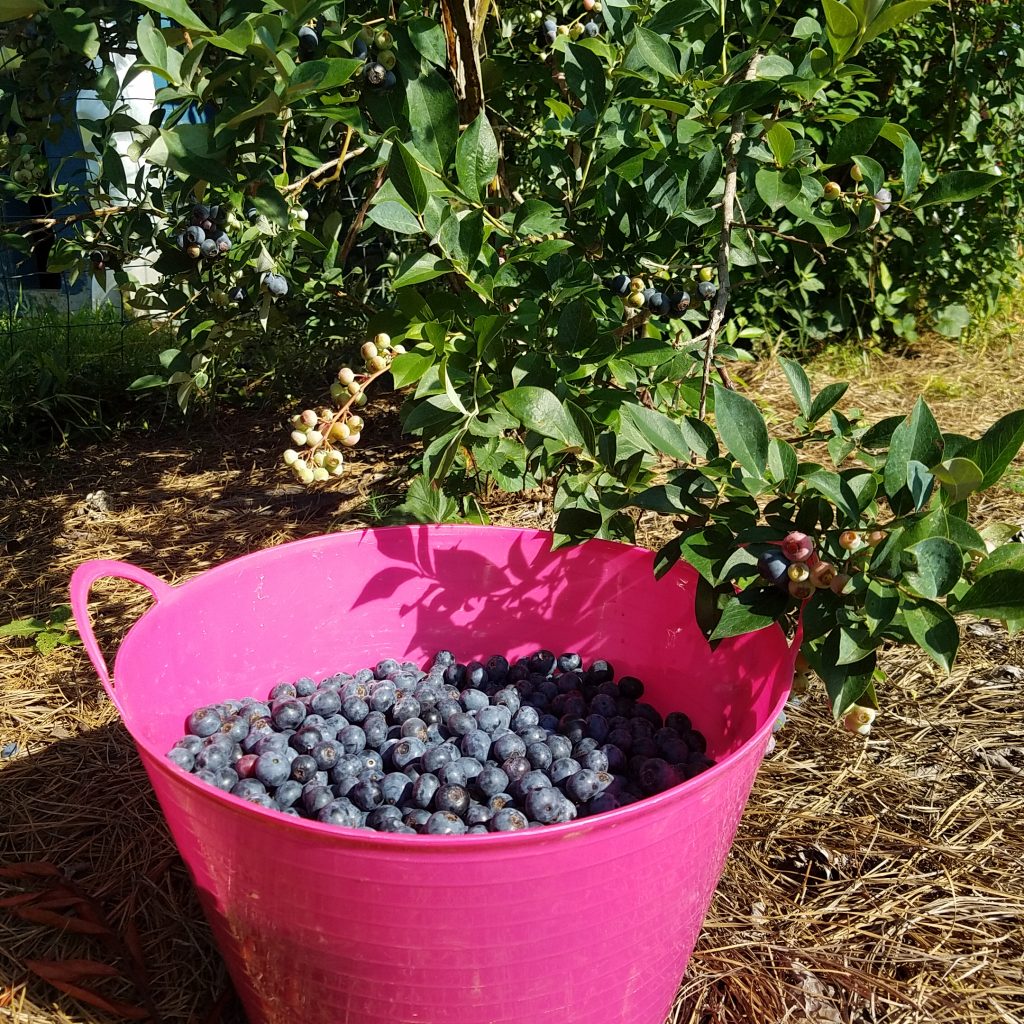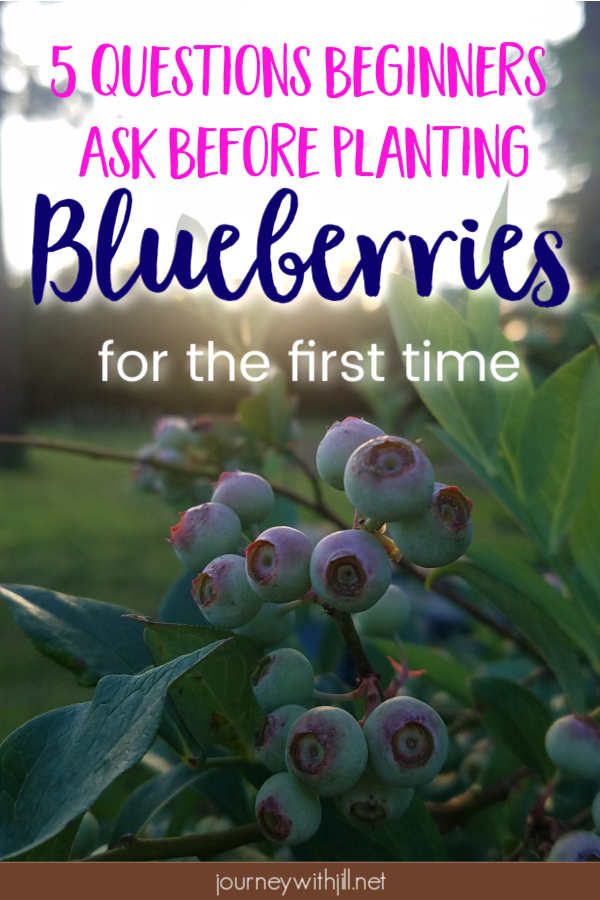Planting Blueberries: Commonly Asked Questions
You’re thinking of planting blueberries, but you don’t know if you can do it. I had no idea what I was doing when I planted my first blueberry bushes in the ground, either. Thankfully, what little research I did turned out to be spot on, so my blueberry harvest exploded over the years.
Because of my success, I’m always asked questions about growing blueberries. If you long for sweet blueberries from your own back yard, this episode of the Beginner’s Garden Podcast and the post below will answer some of the most commonly asked questions.
Disclosure: Some of the links below are affiliate links.
What are the Most Common Mistakes in Growing Blueberries?
The biggest mistake I see people make when growing blueberries is failing to test their soil. Blueberries have few needs, but an acidic soil is a MUST. Blueberries must grow in a soil with a pH of 4.0 to 5.5, so if your soil’s pH is higher than that, you must take steps to amend the soil — preferably before planting.
The other mistake I see is only planting one bush. Although some blueberry bushes can self-pollinate, most require cross-pollination. In fact, the more the better. You will need a minimum of two varieties, though I recommend three to four.
For other common blueberry mistakes, see this post: Avoid these 4 Common Mistakes in Growing Blueberries

Will I Harvest Blueberries My First Year?
Although most experts will recommend you pinch off blueberry flowers the first season to allow the plants to acclimate to their new location, I admit I did not do this. My first season I harvested a handful perhaps, but not many. In general, expect your blueberry plants to take their first year getting established and you can look forward to bountiful harvests in future seasons.

How Many Years Will It Take to get a Full Crop of Blueberries?
In my experience, I harvested enough blueberries from three productive bushes to eat fresh and freeze by the third season. (The second season we harvested several pints for fresh eating.) After the third season, though, we harvested so many we couldn’t keep up with them all. By the fifth and sixth season, we harvested so many gallons we began selling them at the local farmer’s market. As long as the bushes remain healthy, you should expect a greater harvest each season.

Which Variety Should I Buy?
My recommendation is to visit your local nursery — not a big-box store — and purchase your bushes from them. They will stock the bushes most acclimated to your area.
In my Zone 7 Arkansas garden, the varieties I bought are the Rabbiteye varieties — Climax, TifBlue, Brightwell, and Pink Lemonade — which are best acclimated for warmer regions. In this podcast episode, where I interview blueberry expert Dr. Lee Reich, he discusses the different types of blueberry bushes and which regions should grow which types. But if you don’t want to go through the trouble of researching it, your best bet is to purchase from your local nursery.
Are there any Pests or Diseases to Worry About?
Blueberries are for the most part not bothered by pests or diseases. Your biggest challenges might come, instead, from wildlife. Birds tend to enjoy blueberries as much as we do, although in my experience once your bushes are a few years old, there’s plenty to share. However, if you want your blueberries to yourself, bird netting is one option.
Deer and rabbits also enjoy blueberry plants. Depending on where you live, erecting a barrier might prove necessary. Although deer and rabbits make their home in my yard (and help themselves to my garden from time to time), they haven’t bothered my blueberry bushes. I believe this is because the bushes are located next to my dog’s run.
The only other caution I would give is to watch temperatures in the early spring. Sometimes a premature warm-up causes the budding process to begin early, leaving the flowers vulnerable to late freezes. When my bushes were young, I was able to cover them with light sheets; however, once they grew large, I found the weight of the sheets did more damage to the branches and tender flowers than good. Use your best judgment, keeping in mind that blueberries are pretty resilient.
Additional Resources Mentioned in the Podcast Episode
Blueberries in Your Backyard (the book I followed before I planted – plus this has many ideas if you’re growing in containers)
Growing Blueberries? How to Avoid these 4 Beginner Mistakes (blog post)
6-Step Blueberry Planting Workbook

If you want to plant blueberries but you don't know where to start, this FREE 6-step Blueberry Planting Workbook will give you everything you need to know to get started growing your own blueberries!
Enter your e-mail address to download the notebook and receive my "Weekly Garden E-mail" on Fridays, periodic updates on garden resources relevant to you, and get access to a bank of free garden downloads now!
You are also agreeing to our privacy policy.


Thanks for the great info! I want to plant blueberry bushes next to citrus trees in parallel rows. Is this ok? How far apart should the rows be? How far apart should the bushes be? Thanks!
I do not grow citrus trees, so I have no personal experience. But I’d first check to see if citrus requires the same low pH before you plant them all in the same area with the same soil. As far as the space between rows, not knowing how large your citrus trees will grow at maturity and how much root space they require, I’d only be guessing. I would err on the side of more space. My blueberry bushes are about 4-5 feet apart and I wish I had more room for easier harvesting. So I’d say at least 10′ between rows but as I said, that’s a guess and I recommend further research before you plant these trees/bushes that will be a permanent planting for you.
I also live in Arkansas. I have 10 blueberry plants that provide me with tons of wonderful berries. Mine is established and every fall I gather pine needles and pile them high around each plant. This helps with the acidity of the soil. I prune if Feb and if its and exceptionally dry for a period of time I will water. They are truly the easiest plants I’ve ever grown.
I mulch with pine needles some years as well. And that’s about the same time I prune, too.
I have just bought a vaccinium cor nortland plant but the label says its not edible..i thought it was and all sites online say it is too?
I am not sure on that. I’d recommend contacting your local county extension service and asking them.